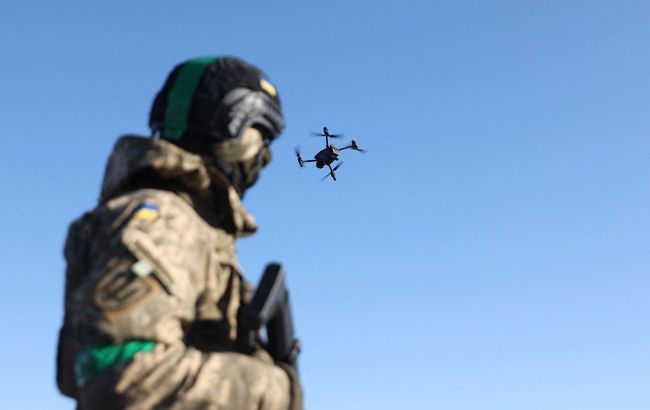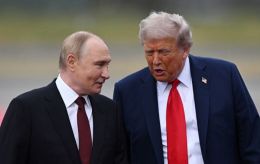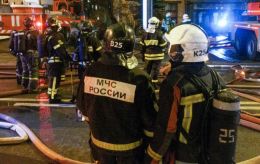Russian army to concentrate its efforts on capturing frontline cities of Ukraine in winter - ISW
 The Russian forces are preparing for a new occupation of Ukrainian territories (Illustrative photo: Getty Images)
The Russian forces are preparing for a new occupation of Ukrainian territories (Illustrative photo: Getty Images)
In the winter of 2024-2025, Russian forces are likely to focus on capturing Ukrainian frontline cities through urban warfare tactics, while attempting to neutralize the advantages of Ukrainian drones and possible restrictions on the use of Russian armored vehicles, reports the American Institute for the Study of War (ISW).
Mikhail Zvinchuk, Kremlin-awarded founder and director of the prominent Rybar Telegram channel and social media project, who has been awarded by the Kremlin, stated in an interview with the Russian-language diaspora channel RTVI on November 16 that Russian forces will attempt to concentrate their military efforts in settlements, rather than open fields during the winter of 2024-2025.
According to him, Russia will prioritize the offensive this winter on the towns of Toretsk, Pokrovsk, and Kurakhove. Russian troops are preparing to initiate the battle for Pokrovsk, advancing towards the city from the south and southeast after the recent capture of Selydove (southeast of Pokrovsk).
Priority targets - Kupiansk and Chasiv Yar
The Institute for the Study of War (ISW) noted that Zvinchuk is a prominent voice in the Russian information space, with ties to the Kremlin and the ability to possess insider information about Russia's objectives on the front lines and campaign plans.
The Institute also reminded that Russian forces have recently advanced to the eastern part of Kupiansk and the central part of Chasiv Yar. This could be part of coordinated efforts to push toward frontline cities in preparation for offensive operations during the winter of 2024-2025.
According to ISW estimates, capturing Kupiansk or Chasiv Yar would have a significant operational impact on the geometry of the front and pose a threat to key Ukrainian defensive positions in those areas.
"The recent Russian advances into the cities would put Ukrainian defenses in both directions at higher but not immediate risk," the report states.
Balancing parity with drones
Zvinchuk claims that Russian forces will also aim to enhance their combat capabilities during the winter of 2024-2025, particularly by increasing the effectiveness of Russian drones due to the importance of the drone war in the winter months.
The director of the Rybar Telegram channel noted that Russian troops currently hold artillery superiority over the Ukrainian Armed Forces, but are unable to advance due to Ukrainian drone attacks. He suggested that better-trained and equipped Russian units would be more capable of countering Ukrainian drone operators.
Earlier, the ISW had pointed out that the Russian Ministry of Defense is working to centralize control over unofficial Russian drone units. Zvinchuk’s comments likely refer to these efforts and suggest that the Ministry of Defense may intend to intensify these initiatives in the upcoming winter.
Urban combat
As noted by the Institute, the Russian military command may consider urban warfare to be more suitable for the current Russian style of infantry combat, as multi-story buildings can provide better cover for Russian troops against Ukrainian drone operators compared to trees in open terrain.
Institute analysts also suggest that the Russian military command may prefer urban combat to avoid the increased costs that advancing through rural fields and settlements would impose on Russian armored vehicles and reserves.
"The Russian military command has likely assessed that offsetting Ukraine's drone advantages and reducing Russian armored vehicle losses through urban combat is worth the large numbers of Russian casualties that will come from grinding, attritional advances in frontline towns and cities," the ISW report states.
Role of drones in the Russian-Ukrainian war
Recently, the ISW assessed that Ukrainian drones continue to play a critically important role in countering Russian mechanized maneuvering, preventing Russian forces from fully exploiting Ukraine's limitations in manpower and material resources.
President Volodymyr Zelenskyy stated that Ukraine is capable of producing 4 million drones annually. Currently, 1.5 million drones have already been contracted.
Meanwhile, in recent weeks, Russian forces have intensified drone attacks on Ukraine using Shahed kamikaze drones. These drones are entering the country's airspace not only at night but also during the day and evening.
In the early hours of Sunday, November 17, during a massive missile attack, Russian forces launched 90 Shahed drones at Ukraine. Air defense forces shot down 42 of them.

